17 People Share Moments From Their Past That Are Worth Seeing

We are helpless without our gadgets. We start to panic when the battery on our phone is low or when there is no internet connection. But being in a dangerous situation all by yourself where every second counts requires quick action to be taken.
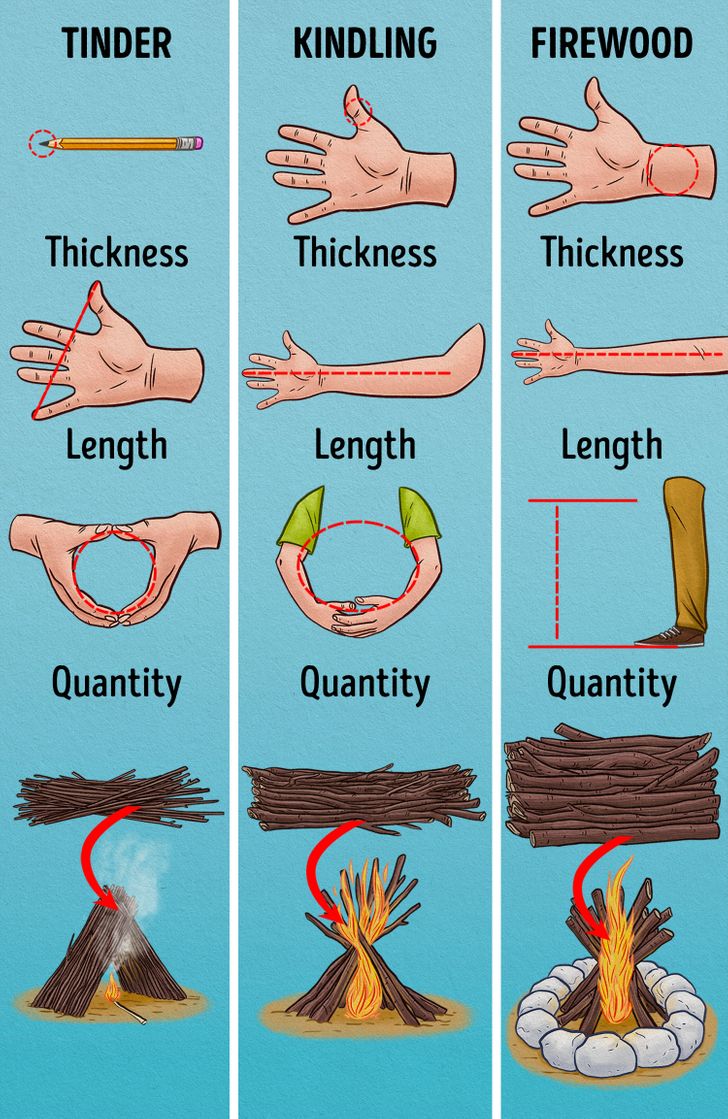
The first thing you need to do in the wild is set up a bonfire. However, not everyone knows how to do it correctly. Therefore, people usually end up wasting their precious time. A bonfire consists of 3 parts:
Firstly, put the tinder in the shape of a tent and burn it. After that, place the kindling the same way and gradually add firewood. Such a fire will burn for a long time and will give good coal for preparing food.
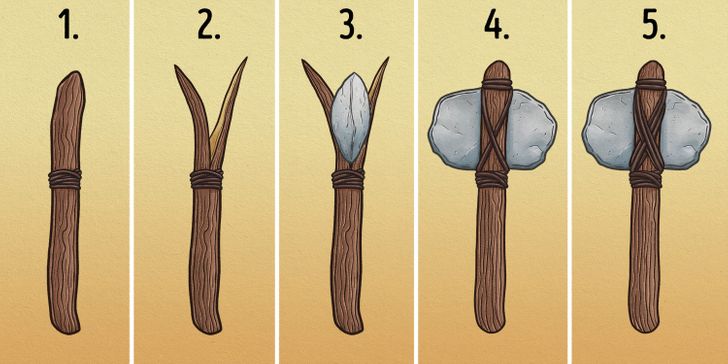
If you don’t have any tools for building a shelter on hand, you can make them yourself. To make a hammer, take a middle-sized, fresh tree branch. Split it into thirds and place a flat but strong stone into the cleft. Afterward, fix it with a rope or a twig both above and below the stone.
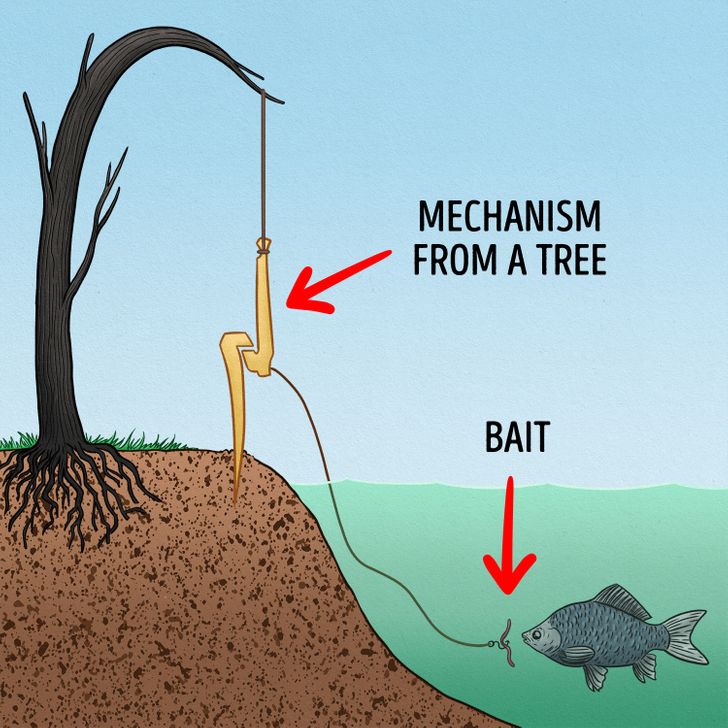
Fish are the most affordable food source in a drastic situation like this, but you’ll need to catch it first. A self-made automatic fishing rod will be of great help.
How to do it: Find a small, young tree near water. Hammer a trap consisting of two wooden wedges and a hook for each other into the ground beside it. Bend the wood and tie up its top to the upper wedge. Tie up a rope with a hook and a bait to the same wedge. When a fish grabs the bait, the trap will work and throw fish out to shore.
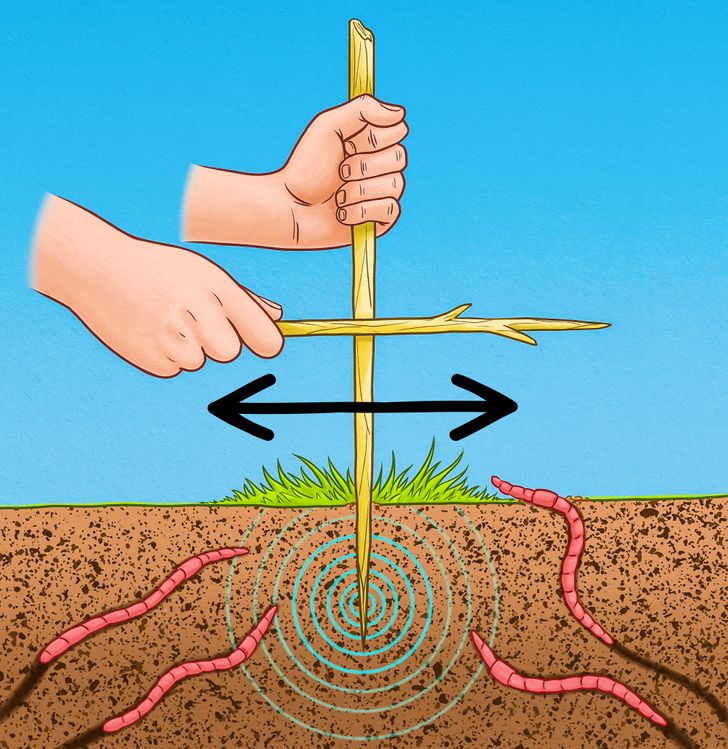
Before catching fish, you should find a bait and for these purposes, there is a trick that fishermen have been using for many years.
Find wet ground and turn a rotten and fallen tree over. Take 2 sticks and hammer one of them to the ground and start to make sawing movements upon it with the second one. 2 or 3 minutes later, earthworms will start to crawl to the surface of the dirt and will be your bait for catching fish.
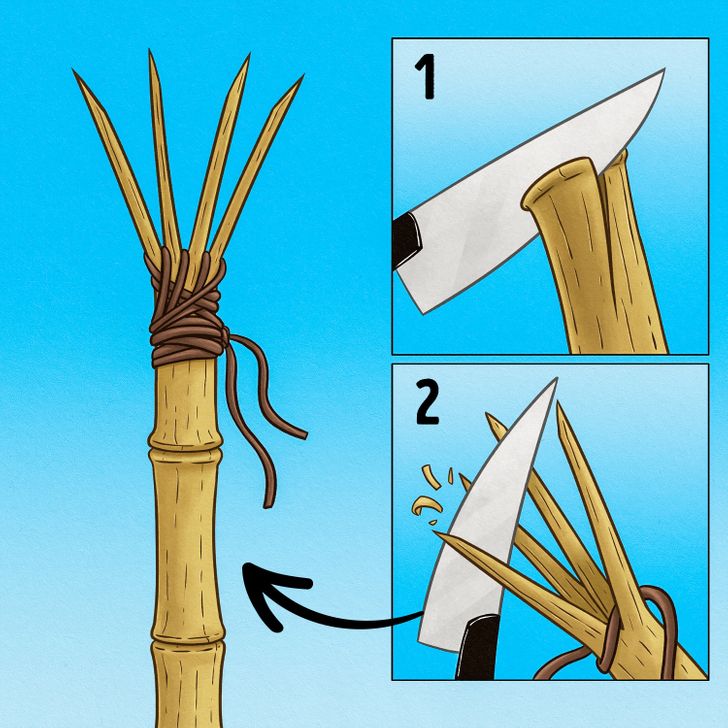
If you don’t have a tool for catching fish, you can make a spear. Find a slightly damp, long and strong stalk. Split its end into 4 parts. Sharpen the spikes of the wood with a knife or a stone and fix it with the help of a rod or rope. Now you can easily catch fish in shallow water.
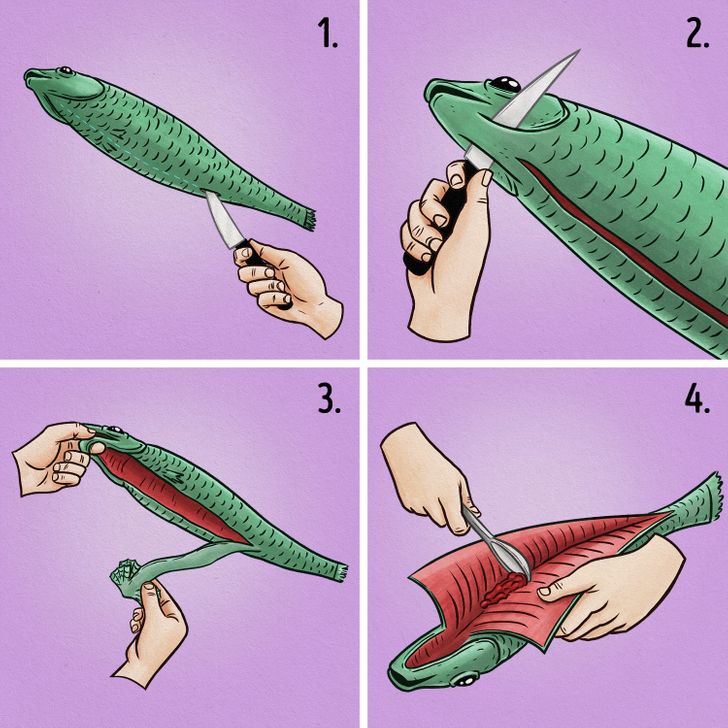
After a fish has been caught, it’s important to clean and undress it. You can do this with several simple movements without much effort or a mess.
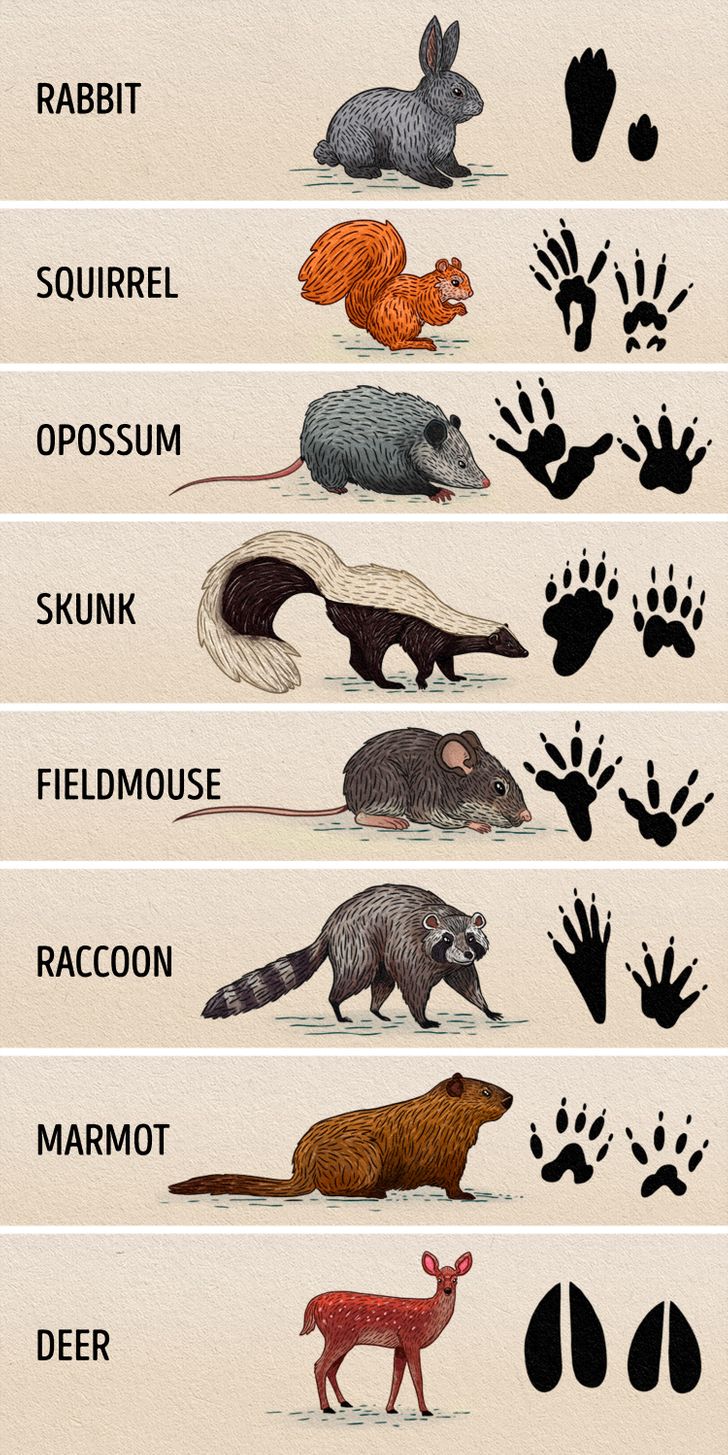
It would be useful to know the footprints of wild animals for hunting or for defending yourself against predators. It’s easy to notice the prints of their paws on wet ground or on crushed grass.
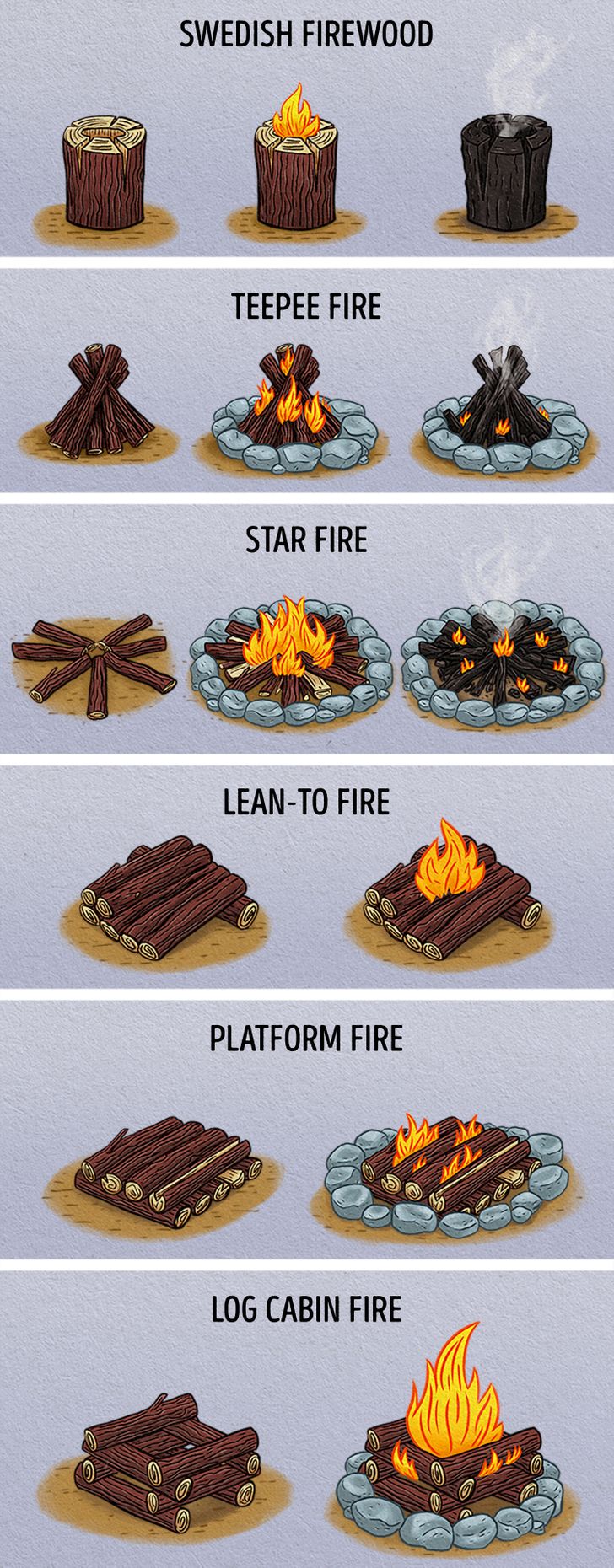
It can be quite difficult to sustain a fire if you use an incorrect position of firewood. There are several main types of logging and depending on the situation, you should choose the appropriate type of fire.
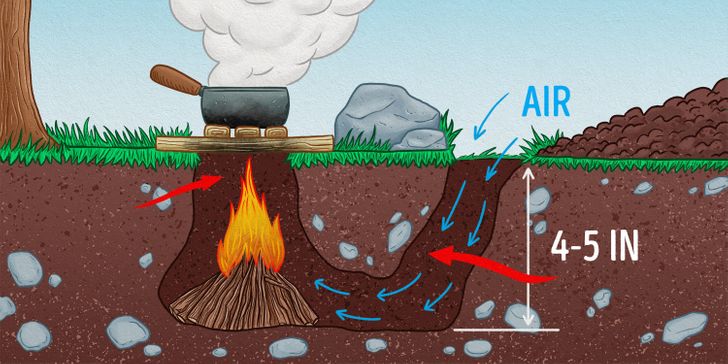
A Dakota hole fire is a hidden underground fire that has been saving people for many centuries. It requires little firewood, is protected from bad weather and provides maximum heat.
All you need to do is dig a pit as deep as 4-5 in and put the firewood into it. Then dig another pit at an angle — it will provide the fire with oxygen. This type of fire should be set near a tree to diffuse smoke. In the end, covering glowing embers will be enough to put out the fire.
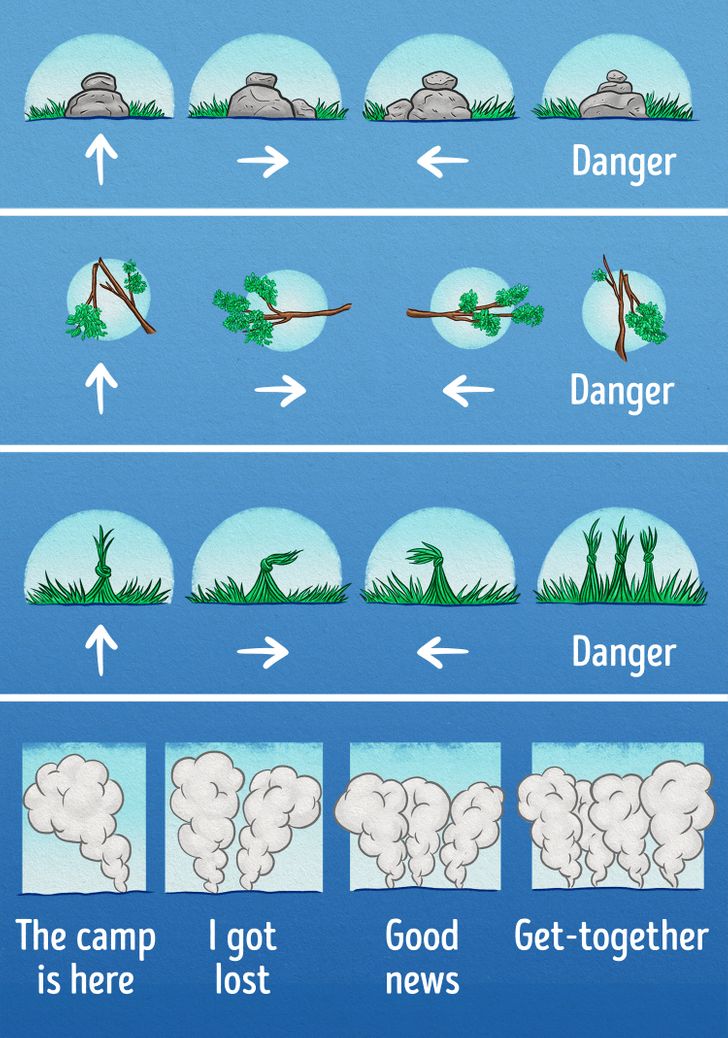
It’s easy to get lost in a wild terrain. That’s why remembering the most common signs can help greatly. They can help you find the way or warn other people about any upcoming danger.
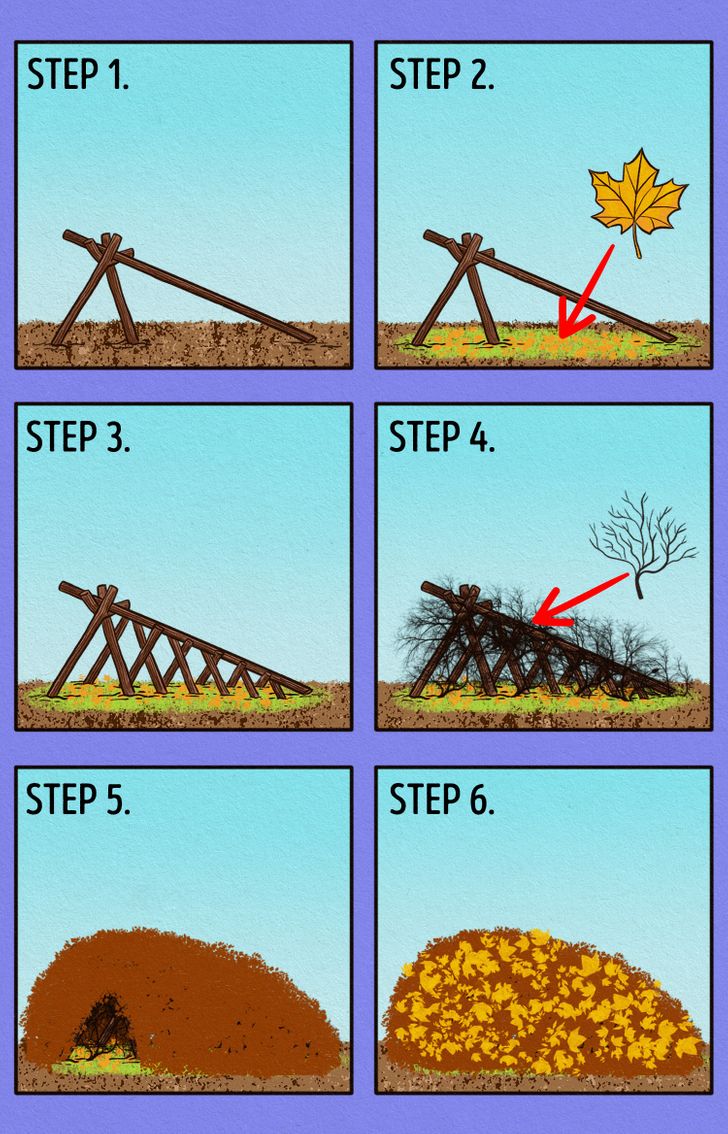
If you have no other choice but to stay in a forest overnight and you don’t have a tent with you, you’ll have to build a shelter yourself.
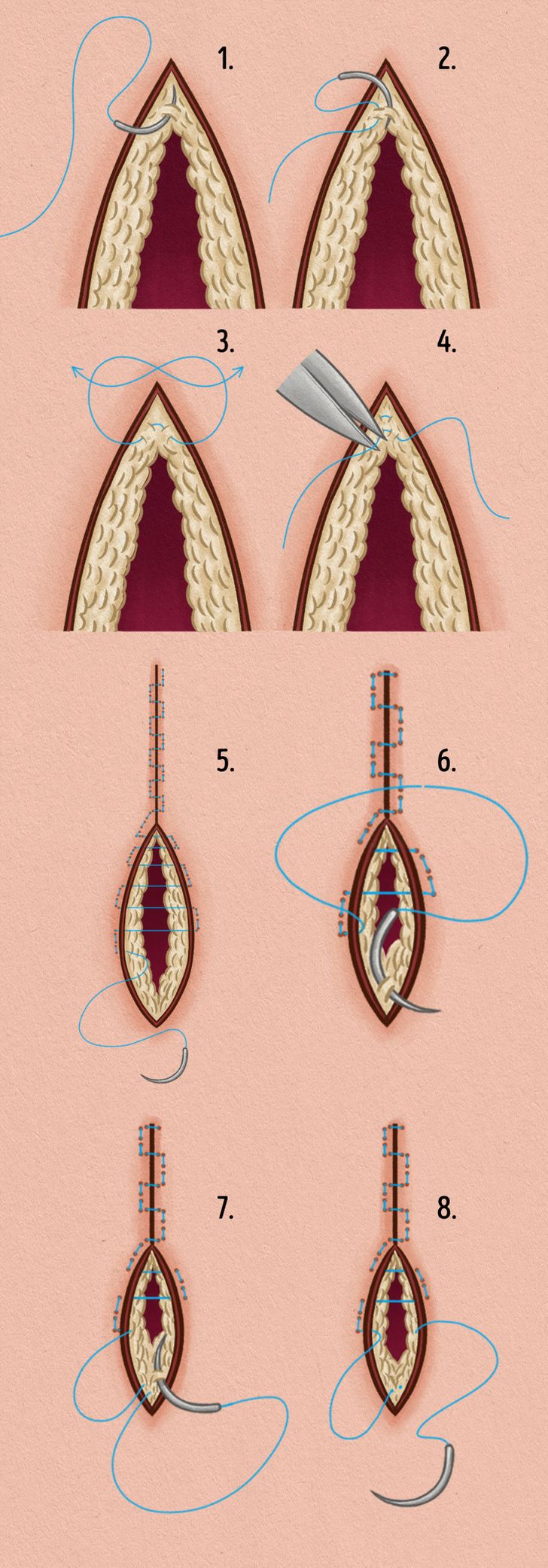
If you get a deep wound, then you’ll have to find a special thread and a curved needle for sewing wounds like the kind you’d find in any standard first-aid kit. But very few of us can actually do this properly. There are many different types of stitches for different wounds but knowing at least one will be enough to give first aid to a wounded person.
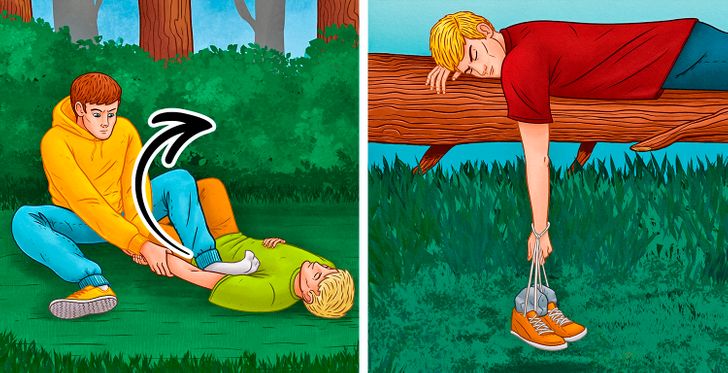
Dislocation is a very common trauma. If you don’t pop the limb into its proper position in time, then a muscle spasm might occur.
For treating another person: Put the injured person on the ground and place your foot (without shoes) in their armpit. Grasp their wrist tightly and start to pull along their body until you hear a click. Don’t do this sharply as it is often shown in movies — by doing so you can harm a person’s nerves, muscles, and tendons.
For yourself: Lie on an elevated surface such as a log. Tie a load to your arm weighing 10-20 pounds. After laying in such a position for 15-20 minutes, the shoulder should get back to its proper position. A fixed limb should be immobilized for at least 5 hours.











